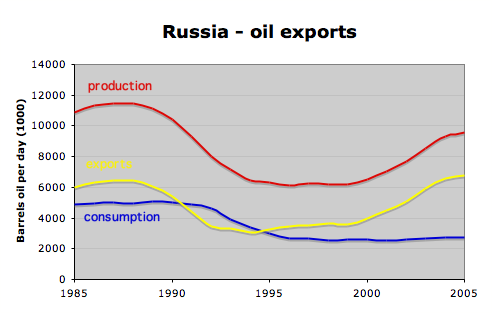Russia peaking - 20% decline by 2020?
I can't find the report this article is quoting -
EIA says Russia has 60M barrels and is producing at 3.5M barrels per year -
so 25 years left at current production
so perhaps it is about at peak -
a 20% decline this decade would be about 2Mbbs/day...
Don't forget Russia in the Number One producer now (surpassing KSA this year) and has been producing flat out (I'm guessing of course) with no cutsie attempts to affect prices like our friends KSA.
Here from the Histon - Impington Courier (seriously) with the title: Peak Oil Confirmed!
EIA says Russia has 60M barrels and is producing at 3.5M barrels per year -
so 25 years left at current production
so perhaps it is about at peak -
a 20% decline this decade would be about 2Mbbs/day...
Don't forget Russia in the Number One producer now (surpassing KSA this year) and has been producing flat out (I'm guessing of course) with no cutsie attempts to affect prices like our friends KSA.
Here from the Histon - Impington Courier (seriously) with the title: Peak Oil Confirmed!
One the one hand, Russia has officially passed Saudi Arabia as the world’s largest producer of oil. The announcement this week indicated that last year and this year saw a 1 percent rise in Russian oil output. Russia has long been considered as having one of the world’s largest reservoirs of the black gold. However, buried in an official report from Russia’s Energy Ministry was this bombshell: “it is clear that the country has no more than 25 per cent of its resources remaining to be extracted.” Furthermore, Russian Oil “production is expected to DROP 20% within the decade.” Russia has hit Peak Oil. So has Saudi Arabia - a fact known to oil insiders for over a decade.


